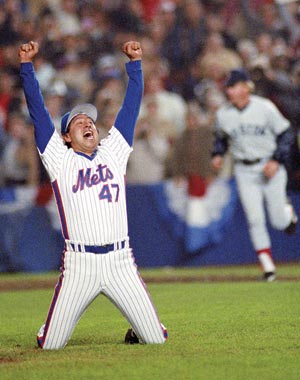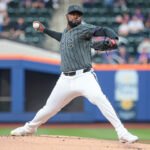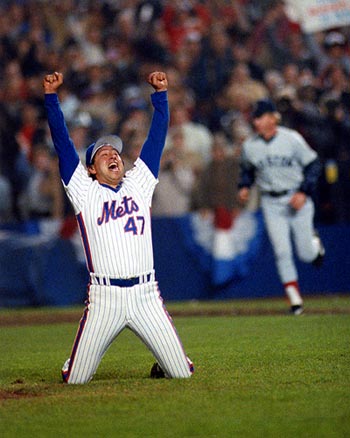
The New York Mets began the 1980s with new ownership, and they would promise “The Magic is Back.” It was a bold promise for a franchise not too far removed from “Grant’s Tomb,” but that year, the Mets would see the beginnings of what would be the greatest run in team history culminating in one of the greatest teams in Major League history.
In the 1980s, the Mets finished second or better six straight seasons. From 1984 – 1989, the team would average 96 wins. That includes them winning 108 games in 1986 and 100 games in 1988. In both seasons, the team would win the division. While everyone credits this player or that player, it all began with Frank Cashen, who is the best GM in team history, and with the Mets putting Davey Johnson, who is the Mets all time leader in wins and win percentage, in the dugout.
There would be two Rookies of the Year, a Cy Young, and countless Gold Gloves, Silver Sluggers, and All-Stars. There was a Hall of Famer behind the plate with maybe one day Hall of Famers at first and in the dugout. There were 30/30 seasons and 200 strikeout seasons. Mostly, there was the 1986 World Series which will forever live on in every Mets fans hearts and memories.
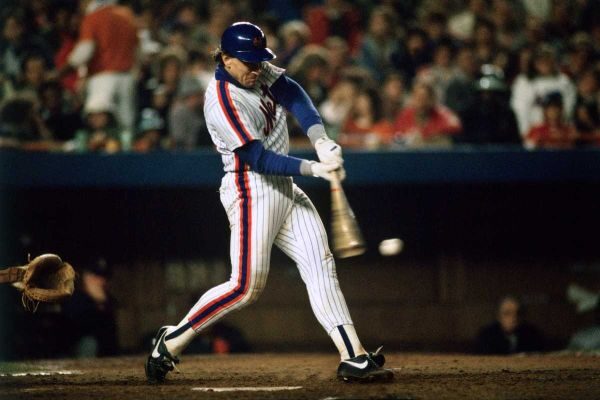
Gary Carter, C
Bottom of the 10th, two outs, and the Mets down by two. At that moment in time, it seemed all over, and the 108 win Mets were about to suffer the biggest heartbreak in franchise history. That was until Carter refused to make the last out hitting a single up the middle to begin the most improbable rally in World Series history.
When the Mets obtained Carter before the 1985 season, it was for that moment. It was to win a World Series. Aside from that rally, Carter would do that hitting two doubles and two homers and leading all players in RBI in that series.
Carter had big moment after big moment for the Mets, and it all started out with a bang with his hitting a walkoff homer in his first ever game. Through it all, Carter wasn’t just an offensive force, but he was a great defensive catcher who got everything out of that young Mets pitching staff.
His time with the Mets cemented his Hall of Fame status, and if not for the Hall of Fame applying rules to him they wouldn’t apply to other inductees, he would be wearing a Mets cap on his plaque.
Honorable Mention: John Stearns (two time All-Star)
Keith Hernandez, 1B
Before he was part of the famed GKR, Hernandez was the best defensive first baseman in the history of the game. In his time with the Mets, Hernandez would five Gold Gloves, which is still a Mets team record. Notably, Hernandez won a Gold Glove in all but one year he was on the Mets Opening Day roster.
Hernandez wasn’t just known for this glove. He was a real leader, who was famed for his ability to teach the young Mets team how to win. In 1983, the Mets lost 94 games and finished sixth in the National League East. Starting in 1984, the Mets would win no fewer than 87 games, and they would finish no worse than second in the division. If there was a Wild Card back then, this would have been a perennial postseason team.
Overall, Hernandez would have two top four MVP finishes, win a Silver Slugger, and make three All Star teams as a member of the Mets. To this day, he remains the best first baseman in team history, and with his being the first ever team captain, the best leader the Mets have ever known.
Honorable Mention: Dave Magadan (122 OPS+)
Wally Backman, 2B
In 1980, Backman and Mookie Wilson were the first two homegrown Mets to debut as we began to see the Mets homegrown core begin to emerge and begin the best run in franchise history. Backman was part of that run with his fiery personality and ability to get on base.
Through his Mets career, Backman had a .353 OBP. At the time, that was the best in franchise history at the position, and to this day, it still ranks as second best among players who have played at least 700 games with the team. His 11.6 WAR with the team also puts him as the third best Mets second baseman ever. For that matter, his 11.6 WAR was the best by any Mets middle infielder in the decade.
Honorable Mention: Tim Teufel (7.5 WAR in four years)
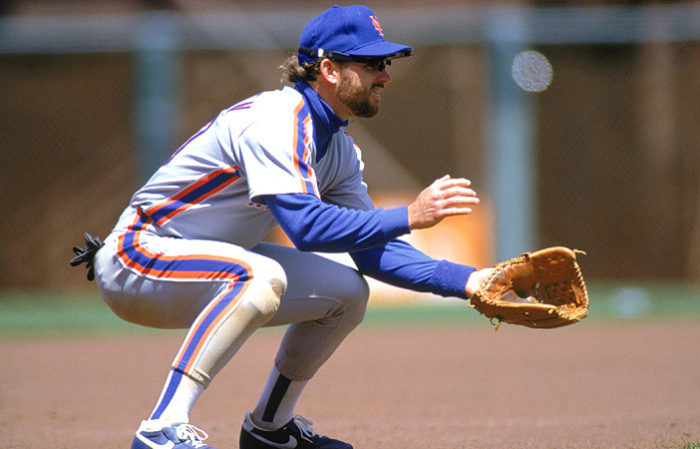
Howard Johnson, 3B
In 1987, Ho Jo had a record breaking season. That year, he became the first ever switch hitter in Major League history to join the 30/30 club. He and Strawberry would become the first ever teammates to do that in the same season. His 36 homers that year would be the most ever hit by a National League switch hitter. It was a mark he would break twice in his Mets career.
In the late 80s, he would show prodigious power hitting .262/.359/.498 (142) twice topping the 305 homer run mark. He was a dead red hitter who owned Cardinals closer Todd Worrell. It would cause the Cardinals and other teams to (falsely) accuse him of corking his bats. Each and every time, he would be exonerated.
Until David Wright, a player Johnson molded in the minors and majors came along, Johnson was the best ever third baseman in team history. Now, he will just have to settle for the best ever switch hitting infielder in team history.
Honorable Mention: Ray Knight (1986 World Series MVP)
Kevin Elster, SS
In the 1980s, the Mets focused primarily on defense at short, and Elster was the best of the lot. In a stretch beginning in 1988, Elster would begin what was a Major League record of 88 errorless games at the position. With his glove, he would appear in five games during the 1986 postseason as a late inning defensive replacement.
In addition to the defense, Elster would lead all Mets shortstops who played at least 300 games in the decade in homers, SB, wRC+, and WAR.
Honorable Mention: Rafael Santana (1.5 WAR)
Kevin McReynolds, LF
In 1988, McReynolds would finish third in MVP voting, which to this date, is the highest any Mets left fielder has ever finished in the voting. That season was part of a good Mets career which gets overlooked partially because he was obtained for a player in Kevin Mitchell who won a ring with the 1986 Mets and went on to have big years with the San Francisco Giants.
McReynolds 10.7 WAR with the Mets was double what any other Mets left fielder had in the decade. In addition to the solid bat and defense, he would come up big in the 1988 NLCS hitting two homers and slugging .536.
Thank Honorable Mention: George Foster (99 homers)
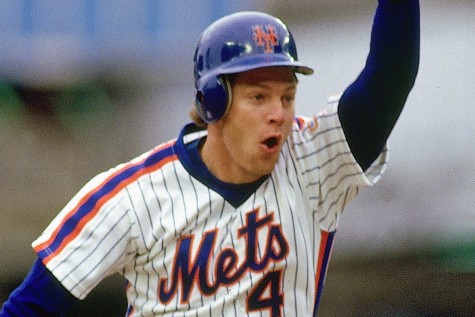
Lenny Dykstra, CF
Believe it or not, Dykstra was the best outfielder on the 1986 Mets with a 4.7 WAR on that team. That was part of a huge year for Dykstra which began with his taking advantage of the opportunity presented when Wilson injured his eye during Spring Training.
During that year, Dystrka would hit the Mets first ever walkoff homer in Game 3 of the NLCS. It was a crucial homer for a team who faced falling behind 2-1 with Mike Scott ready to take the mound in Game 4. Dyskstra would repeat his Game 3 heroics by hitting a leadoff homer off Oil Can Boyd to help the Mets get back in that series.
During the decade, Dykstra had a 118 wRC+, which was the best for any Mets center fielder. He’d also have the batting average, OBP, and slugging. More than that, he was a big time player hitting .328/.419/.609 with four doubles, a triple, four homers, and nine RBI in 20 postseason games.
Honorable Mention: Mookie Wilson (281 stolen bases)
Darryl Strawberry, RF
Strawberry remains an all-time Mets great and easily the best right fielder in team history. In 1980, he was the second ever Mets player drafted first overall, and in 1983, he became the first such Mets player to make his Major League debut. Until Pete Alonso this year, Strawberry would be the only Mets position player to win the Rookie of the Year award.
In addition to the Rookie of the Year honors, Strawberry would finish higher than any other Mets player has in MVP voting finishing second in 1988. His seven All-Star appearances are the most any Mets position player ever has. His 215 homes in the decade were more than any Mets player has ever hit in one decade.
Speaking of homers, Strawberry’s blast in the bottom of the eighth in Game 7 gave the Mets some breathing room, and it began one of the longest home run trots we have ever seen.
Through it all, even with the addiction problems, Strawberry delivered on the field. He still leads all Mets outfielders in WAR, and he is still the Mets all-time leader in homers. Those marks remain all the more impressive when they continue unchallenged year after passing year.
Honorable Mention: Danny Heep (First DH in Mets history)
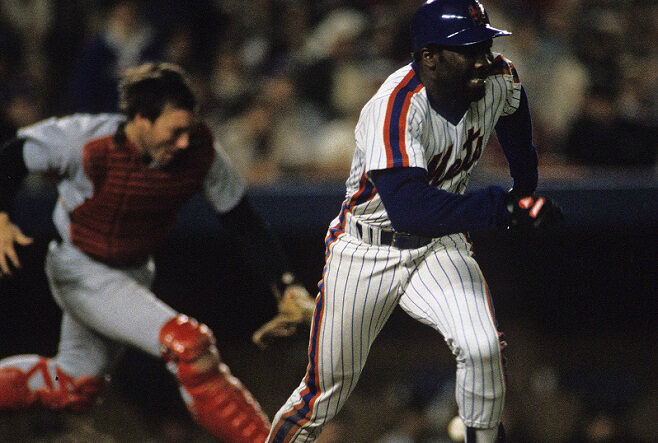
Mookie Wilson, UTIL
By the time Wilson was traded by the Mets to the Toronto Blue Jays, he was the Mets all-time leader in stolen bases and triples. He was also second in runs scored while being in the top five in a host of other categories. More than that, Mookie was a beloved Mets player who was seen as the first real piece of the 1986 Mets World Series.
His eye injury in 1986 would lead to Dyskstra getting the full time center fielder role, but Wilson would adapt playing some left field. Later, he would platoon with Dykstra helping propel the Mets to another National League East title in 1988.
Of course, no story of Mookie is complete without telling the story of how he fought off pitch after pitch from Bob Stanley keeping the at-bat alive. During that at-bat, he somehow got out of the way of what should have been a hit by pitch. That wild pitch allowed Mitchell to score and put Knight in scoring position. Knight would then score on Mookie’s little roller which found its way through Bill Buckner‘s legs.
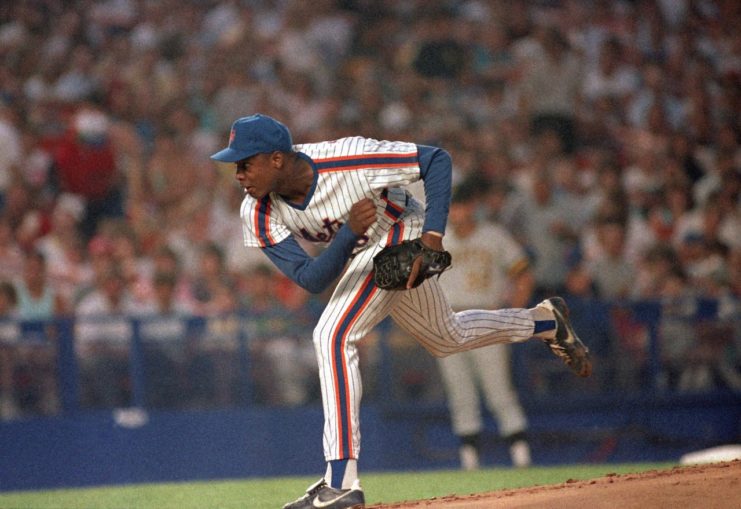
Dwight Gooden, RHP
This is a franchise which had Tom Seaver, who is arguably the greatest right-handed pitcher in Major League history. Jacob deGrom is about to become the first Mets pitcher to have consecutive Cy Young awards. The team has seen great pitcher after great pitcher like Pedro Martinez and Johan Santana, and yet none of them had a better two year stretch than Doc.
In 1984, Gooden won the National League Rookie of the Year award, and the following year, he was the Cy Young winner. You could put into greatness into numbers and the like. However, the best way to describe how great he was, as noted in a Sports Illustrated article, Gooden was tipping his pitches.
The opponents knew what was coming, and they still couldn’t hit it. This should come as no surprise when Gooden paired an electric fastball with a curveball so good Tim McCarver famously dubbed it Lord Charles.
Gooden’s 1985 season was the single best WAR, ERA, shutouts, ERA+, and WPA any Mets starter ever had. His 1984 season was the best K/9 and FIP a Mets pitcher ever had. He has the Major League rookie record for most strikeouts in a season, and really, he was one of the best pitchers to ever toe the rubber for the Mets.
In the 1980s, Gooden 100-39 with a 2.64 ERA, 1.109 WHIP, and 1,168 strikeouts. More than the numbers, he was a true ace who drew fans in droves to the ballpark due to his greatness.
Honorable Mention: Ron Darling (87 wins)
Sid Fernandez, LHP
By WAR, El Sid was the Mets second best pitcher of the decade, which gets overlooked because he was never viewed as such. But make no mistake, he was very much that. In fact, his 1985 season remains the best single season H/9 mark of any Mets starter. Fernandez also had the fifth best mark with his 1988 season. On that front, his H/9 is the fourth best in Major League history.
Fernandez was an All-Star in 1986 and 1987. He got there because he was a surprisingly athletic player who had a seemingly rising fastball. The pitch was difficult to hit, and we would find Fernandez occasionally flirting with a no-hitter.
As impressive as any individual game or achievement was, Fernandez came up biggest in Game 7 of the 1986 World Series. After Darling was knocked out in the fourth, Fernandez came in and pitched 2.1 scoreless to keep the Mets in the game allowing them to come back from the early 3-0 deficit.
In that World Series, Fernandez pitched 6.1 scoreless striking out nine in 6.1 innings. If not for his contributions, the Mets probably don’t win that World Series. That alone merits his inclusion on this list.
Honorable Mention: Bob Ojeda (112 ERA+)
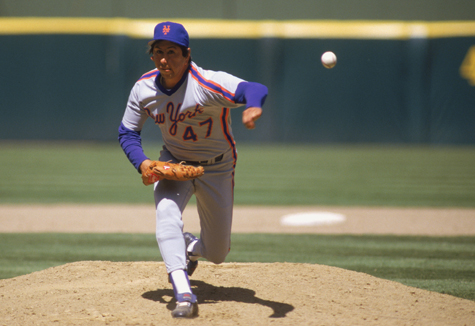
Jesse Orosco, RP
Sooner or later, Orosco’s glove is going to come down to Earth.
That celebration is one of the more iconic celebrations in World Series history. It was all the more fitting it was Orosco on that mound too. The story began with the Mets obtaining him from the Minnesota Twins in a package for Jerry Koosman. Koosman was the Mets pitcher standing on the mound when the Mets won their first World Series.
Orosco won three games in the 1986 NLCS, and he started down Kevin Bass to record the final out in what was his third inning of work to close out the Mets third ever pennant. In the World Series, he recorded two saves. He would also butcher boy in an RBI single making him the last relief pitcher to record a World Series RBI.
In addition the 1986 heroics, Orosco’s 1983 season was perhaps the best ever for a Mets reliever. In that season, he would make his first All-Star team, and he’d finish third in Cy Young voting. Of Mets pitchers who threw 100 innings in a season, Orosco’s 1983 season was the best ERA and ERA+.
His 107 saves in the decade was easily the most by any Mets reliever as was his 12.3 WAR. Again, more than the save numbers or his ERA, Orosoco was the man standing on the mound when the Mets won a pennant and a World Series.
Honorable Mention: Randy Myers (9.9 K/9)


